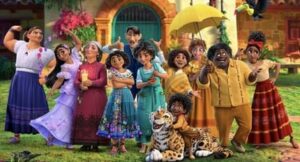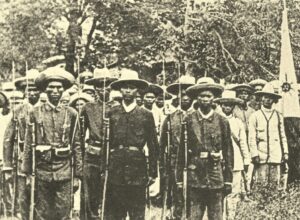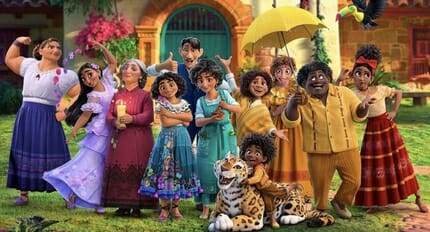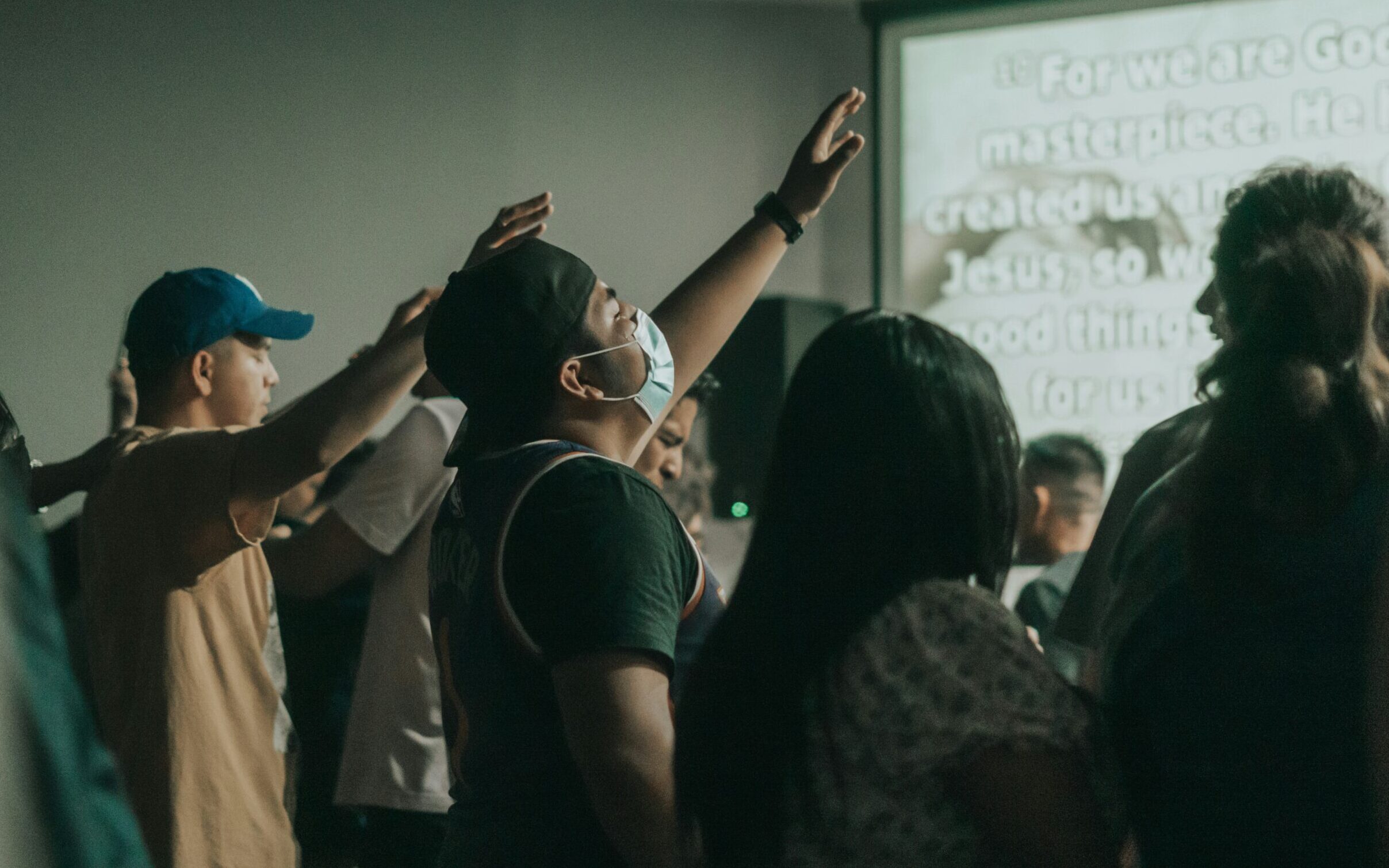Why “Encanto” Feels Close to the Filipino
By Junelie Anthony Velonta
HAPI Scholar

Filipinos, even months after the release, can’t seem to shut up about Disney’s latest animated movie: Encanto. Well, how could they not? From young to old, many Pinoys who have seen the movie identify with one or many of the Madrigals. Breadwinners relate to Luisa. Those who carry filial burdens and expectations relate to Isabela and Mirabel. And Bruno, who had a song and dance number enumerating reasons on why he should not be talked about, was a welcome representation of the “black sheeps”.
Of course, there are other reasons. While the movie is canonically set in South America, it somehow looks familiar. Any trip to a rural town in the Philippines would be reminiscent of the layout and feel of the town the Madrigals helped to build and maintain. The characters, from the supporting to the main cast, somehow look like us. Their complexions are diverse and bear similarities to ours. Their fashion and clothing look like our Spanish-inspired “national costumes,” often seen and worn during the yearly Buwan ng Wika. Even their values resemble ours.
These similarities and emotional attachments aren’t just superficial: something deep ties the Madrigals and the Filipinos. It may come as a surprise but these ties are the result of one thing: Colonialism.
Enter the Spanish
Much of South America was also colonized by the Spanish. South Americans from 200 years ago experienced similar hardships that our ancestors did. In fact, they revolted earlier than us, with the first South American revolts beginning in the late 1800s. The Spanish would not fully withdraw from the continent by the 1830s, while Filipinos expelled the Spanish in the late 1890s. As such, even if we are an ocean apart and of different races, Filipinos and South Americans have a shared history. This shared history is shown in clothes, architecture, and even family dynamics.
This is not the first time in our history where displacement was a problem for Filipinos.
For the sake of brevity, however, this article would not focus on the social structures of the South American peoples. Instead, it will focus on how colonialism changed the family dynamics of the pre-colonial peoples of the Philippines, changing how we live and leaving generational traumas still felt today, 500 years later.
Displacement and the Need for Security
In the movie, Abuela Alma and her family and community were violently displaced, saved only by “the miracle.” This story, though told through magic, is not far from truth. According to the Internal Displacement Monitoring Center, Colombia, where the movie is canonically set in, is home to five million people driven away from their rural homes due to conflict and violence. While it is a stretch to say that the ongoing conflict in Colombia is directly caused by the Spanish, these conflicts (much like many problems faced by formerly colonized nation-states) have arisen because of complications stemming from internal problems due to colonialism.
This conflict is not just experienced in Colombia and South America. Internal Displacement is also a problem here in the Philippines. While most national news agencies often report about evacuees due to natural disasters, displacement due to armed conflict has been going on throughout the islands, though seldom reported nationally. Perhaps still fresh in the minds of most Filipinos are the events of Zamboanga and Marawi, but there are “smaller” conflicts still going on. Whether it be caused by the NPA, the nationally sanctioned Armed Forces, or even by the rich and powerful who have interests in rural property, internal displacement is an ongoing problem.
However, this is not the first time in our history where displacement was a problem for Filipinos. Our very own national hero, Jose Rizal, witnessed and experienced displacement. As a university student, Rizal’s family and their properties became subject to the wishes and whims of the local religious orders. The Dominicans wanted their land, and thus their family was expelled from their home in Calamba.

Going back 300 years before Rizal’s time, in the early colonial period, it could be seen in those times the first roots of displacement planted by the Spanish, and how it changed the Filipino family dynamic until today. Even before the Spanish arrived, Filipino society has been organized under the family. That is, the actions of the individual must be with the consultation and/or approval of the family and, further up for more serious issues, the clan. According to the Cambridge History of Southeast Asia, this was the most effective and sustainable way for governing in the pre-colonial period as communities were often maintained by family groups who have settled in a specific area. While influence might be inherited, the Datu still being the head and the richest in the community, actual leadership roles were given to individuals who had relevant management skills.
This changed with the Spanish and the encomienda system. Emulating European politics and social structures, the colonizers appointed permanent local collaborators to extort exorbitant taxes to the local population. According to the work of the anthropologist Kathleen Nadeau titled “So Far, Yet Home? The Impact of Colonization and Globalization on the Philippine Family,” the said practice effectively disrupted the family-oriented governing style and led to the first physical displacement of the Filipinos. Those that did not have the means to pay the taxes of the Spanish fled away from their communities, while some openly rebelled.
However, physical displacement wasn’t the only type of displacement experienced by our ancestors. The encomienda system also displaced people economically, bringing widespread poverty among the local population. In fact, this neck-breaking shift is recorded in the language we speak today. For example, for precolonial Visayans, the word associated with the free or warrior class was “Timawa.” In the dictionaries published by the Spanish in the 1600s, however, barely three generations since they first arrived, the word “Timawa” then meant those that experience poverty, or those that have been humbled.
While the Spanish dismantled the family-oriented governance of the precolonial Filipinos, internal leadership was still centered on the nuclear or direct family. The firstborns can’t do things on their own without the approval of their parents, or without considering the future and well-being of their siblings. Before the Spanish, this system would have been sustainable. However, as a large part of the population was now under harsh Spanish rule and abject poverty, the social and economic mobility that allowed for such a system to thrive was not present anymore. As this was the only way they could survive, however, our ancestors did not have much choice.
The Family in Hardship
It may be true that life, on average, has become better 500 years later. Free education. More and wider routes for economic and social mobility. However, the problems from 500 years ago also stuck with us. As this family-oriented style of “self-governance” was all our parents and grandparents have known, it was also all that they could rely on. Thus, pressures were still on the eldest and/or most capable children not only to support their parents but also their siblings.
…Which leads us back to Encanto and the dynamic of the Madrigal family. We relate to them deeply because of our shared experiences and shared history. Though the circumstances have changed 500 years (and the rise of modern capitalism) later, the human experience remains similar. It is because of the hardships of our ancestors that we see ourselves in Mirabel, Luisa, Isabela, Bruno, and all the other members of the Madrigal family. While this may be part of our history and heritage, hopefully this is something that we can change for the better. After all, Encanto was not about clinging to the hurtful past, but moving into a better future.









